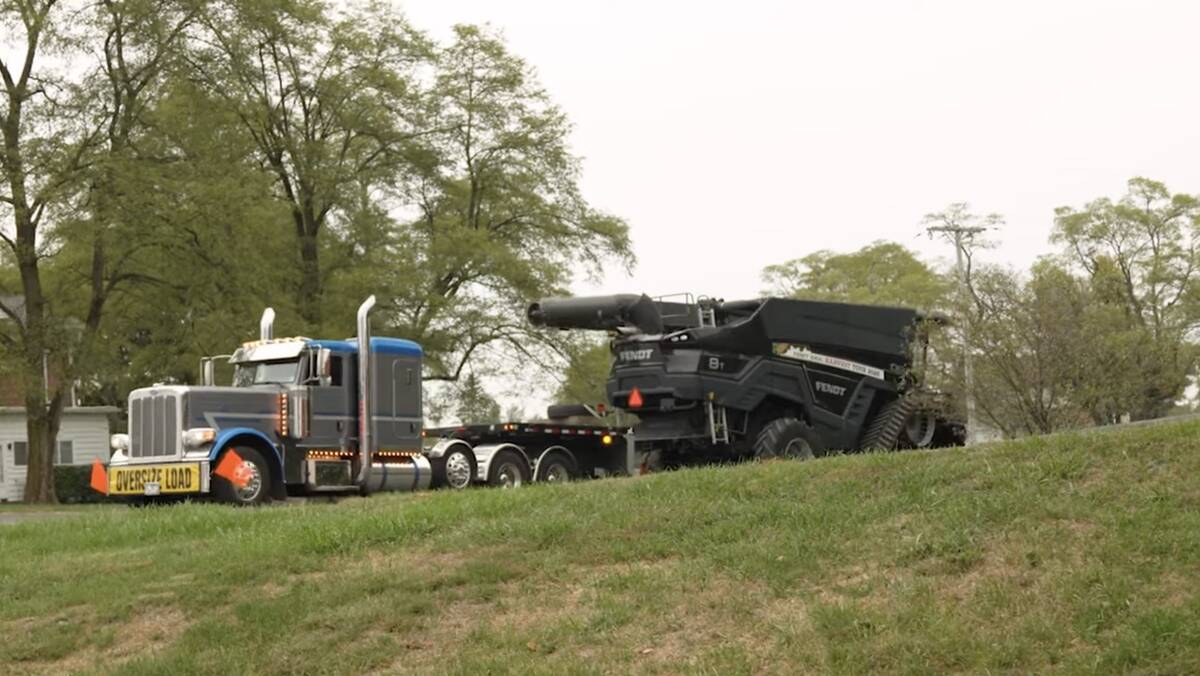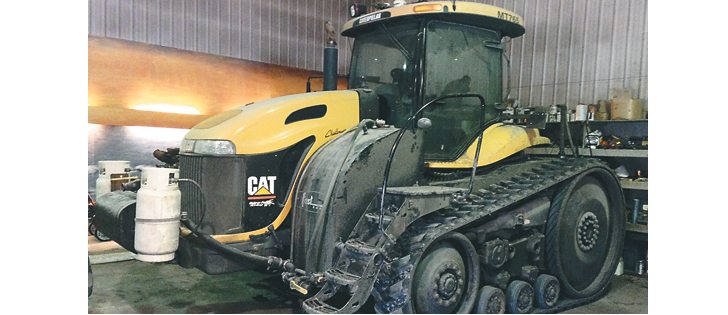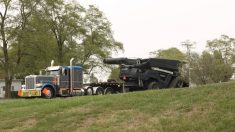By the time Uli Gehrer pencilled out the economic benefit of his Diesel-Flex prototype, he knew the propane kits would go on his combine and next tractor.
The farmer from Niverville, Man., installed the kit on his John Deere 8400T five years ago, shortly after Maxquip started installing its prototype kits on highway tractors.
Maxquip had not equipped a farm tractor at that point, but wanted to try it, and Gehrer happened to be in the right place at the right time.
The only condition was that he had to put together a detailed economic analysis. Not a problem for Gehrer.
Read Also

Fendt takes a combine on the road in the U.S.
Putting an Ideal combine in fields across different regions has given the brand a chance to prove that the combine is capable of performing well in a variety of conditions.
Before propane, his John Deere tractor consumed 12 gallons per hour of diesel while pulling a 37 foot Salford tillage unit with an anhydrous ammonia nurse tank at 7.5 m.p.h.
Once the propane kit was installed, the same tractor pulled the same tillage unit and the anhydrous tank, but now the ground speed was 10 m.p.h. Diesel consumption dropped to 8.1 gallons per hour. Propane consumption was slightly less than two gallons per hour.
Gehrer saved 3.9 gallons of diesel per hour but burned 1.9 gallons of propane per hour, for a net fuel saving of two gallons per hour. Gehrer figured he saved $10.26 per hour in fuel, which was a 23 percent fuel saving.
However, the extra power was what really stood out.
“Oh, you really feel that extra power. I’m guessing we got about a 20 percent increase in horsepower, probably an extra 70 horsepower,” Gehrer said.
“When they sized the propane injectors, it was for a highway tractor. I told them that was too much horsepower for my tractor. You couldn’t run an engine like that day in and day out. So we put in some smaller injectors and that was just about right.
“I find the higher load you run, the more fuel you save percentage wise. It’s a linear relationship. As you get more boost pressure, you get more propane. My most significant fuel savings are when I run it at the upper end of the power range, like in a tillage operation.”
Gehrer said he had a problem with one of the electronic controls on the prototype in the first week after installation.
However, there were no further issues once it was replaced.
For more information, contact Gehrer at ugehrer@gmail.com.
















